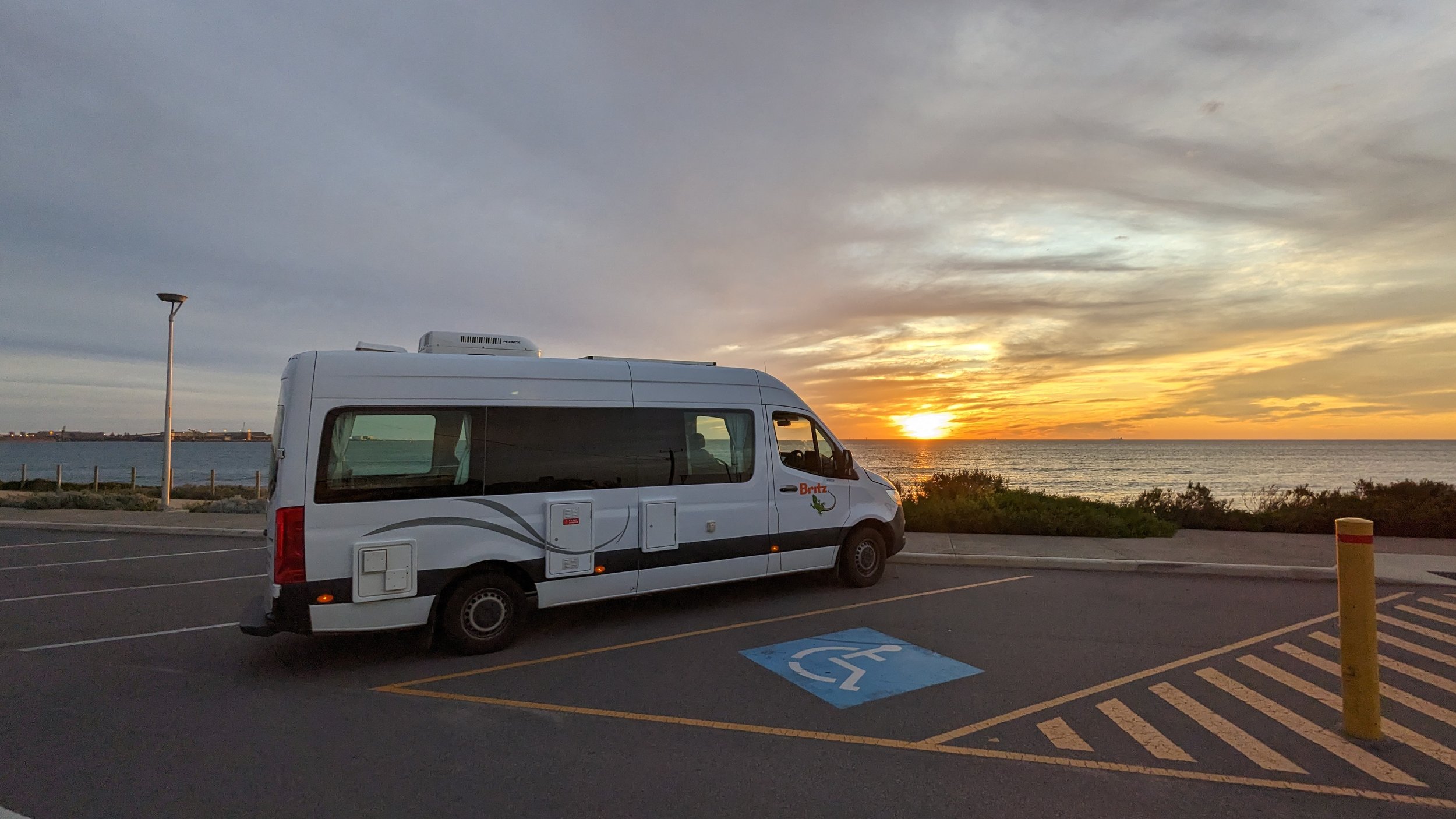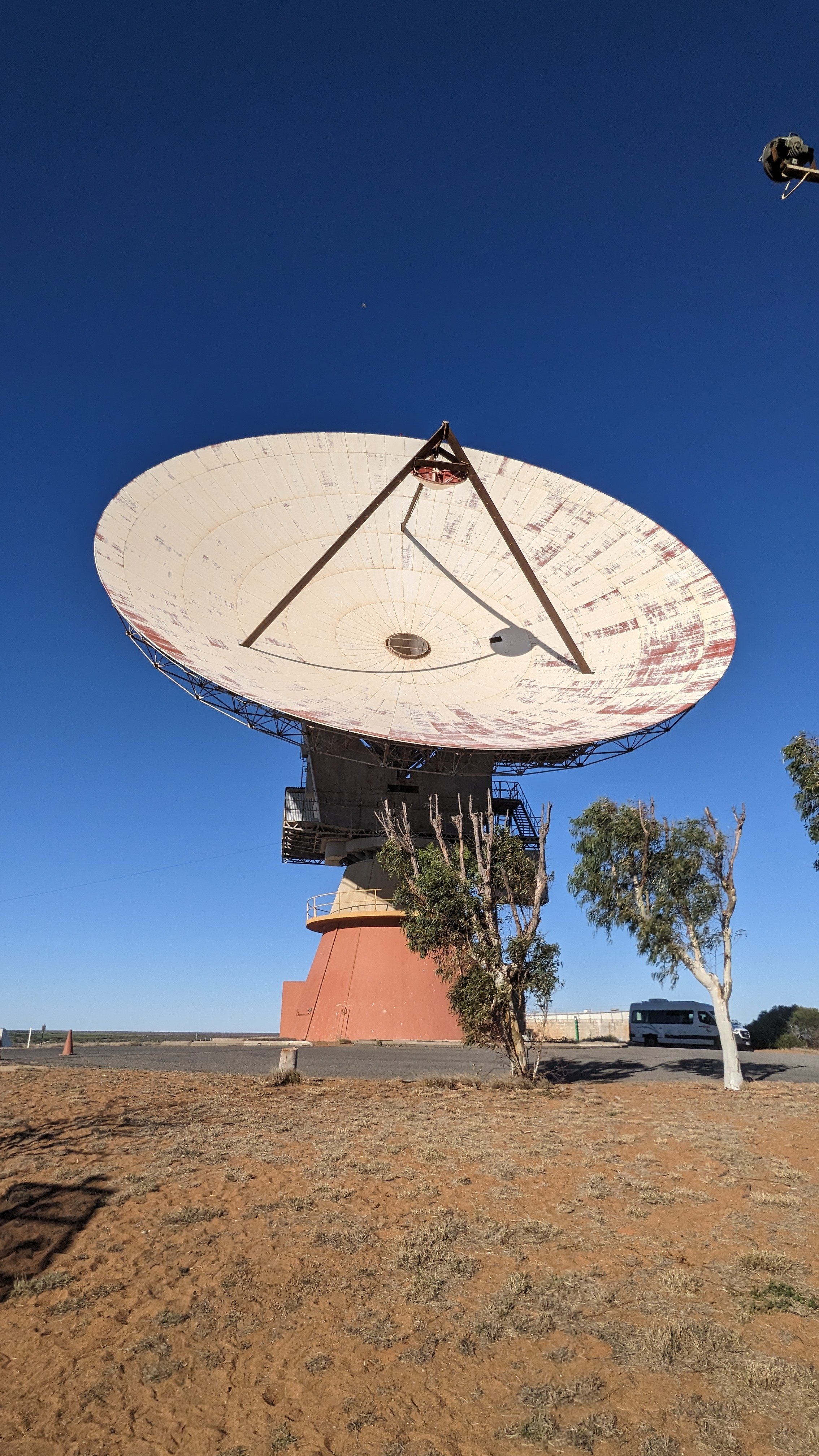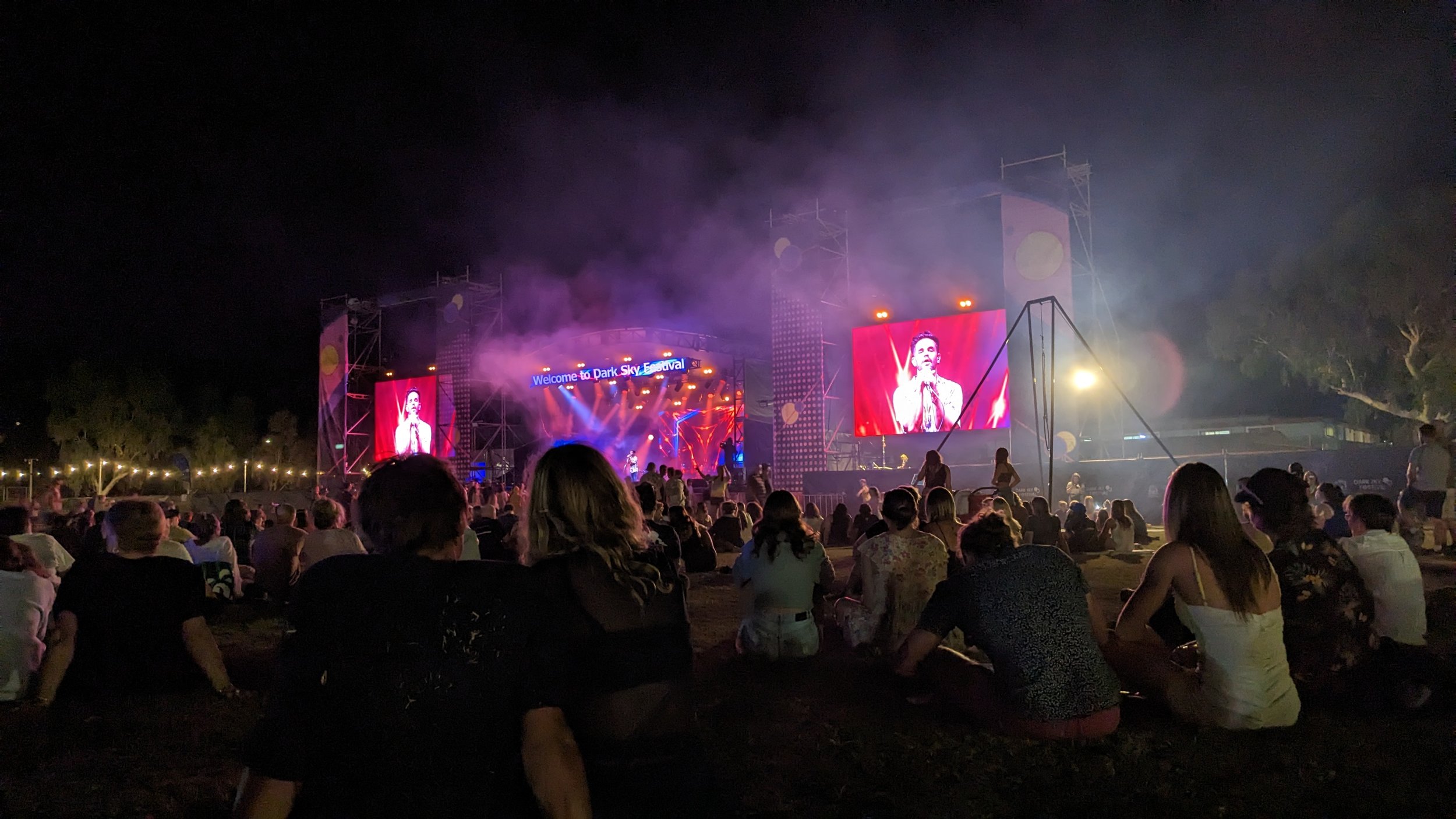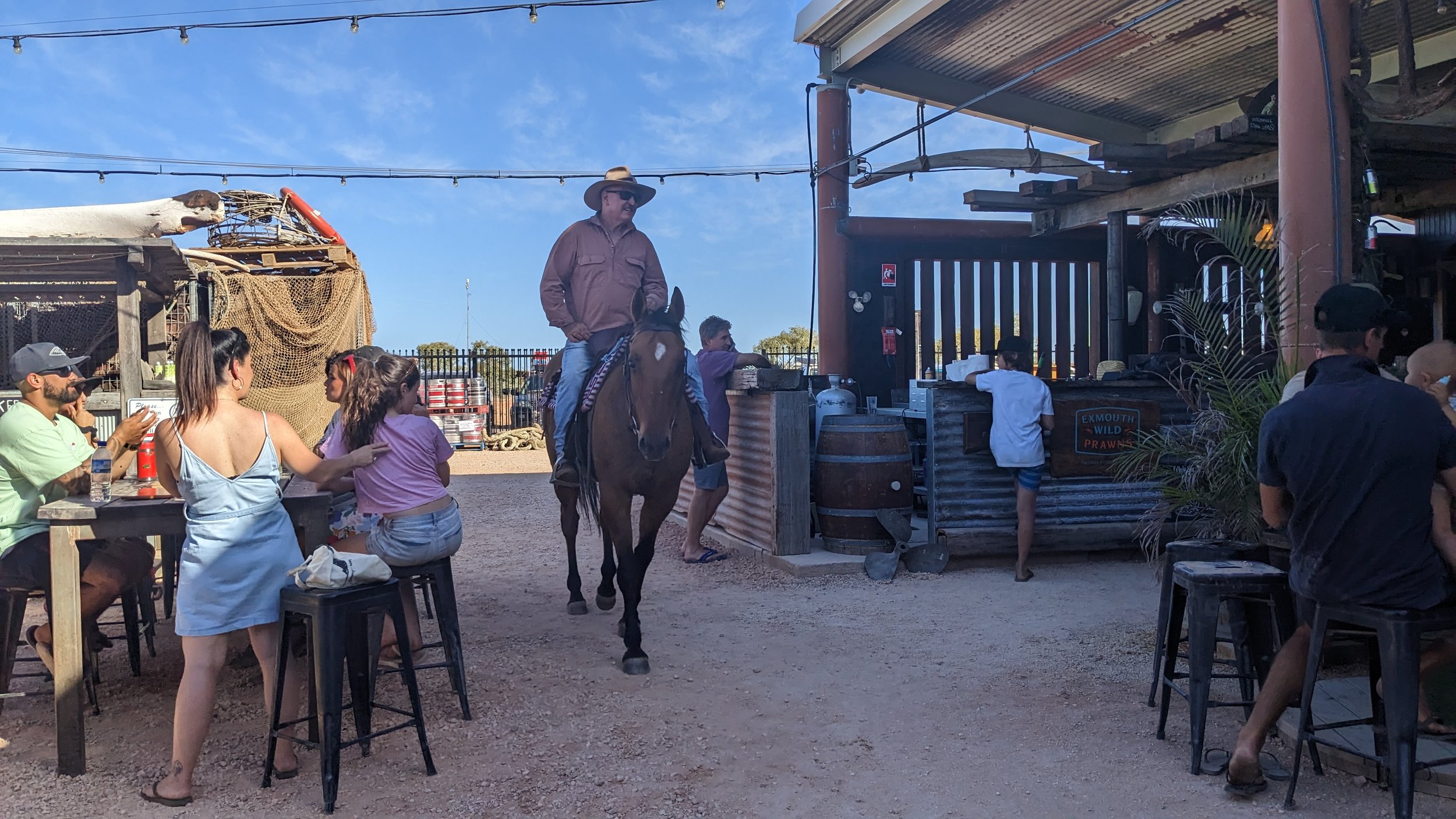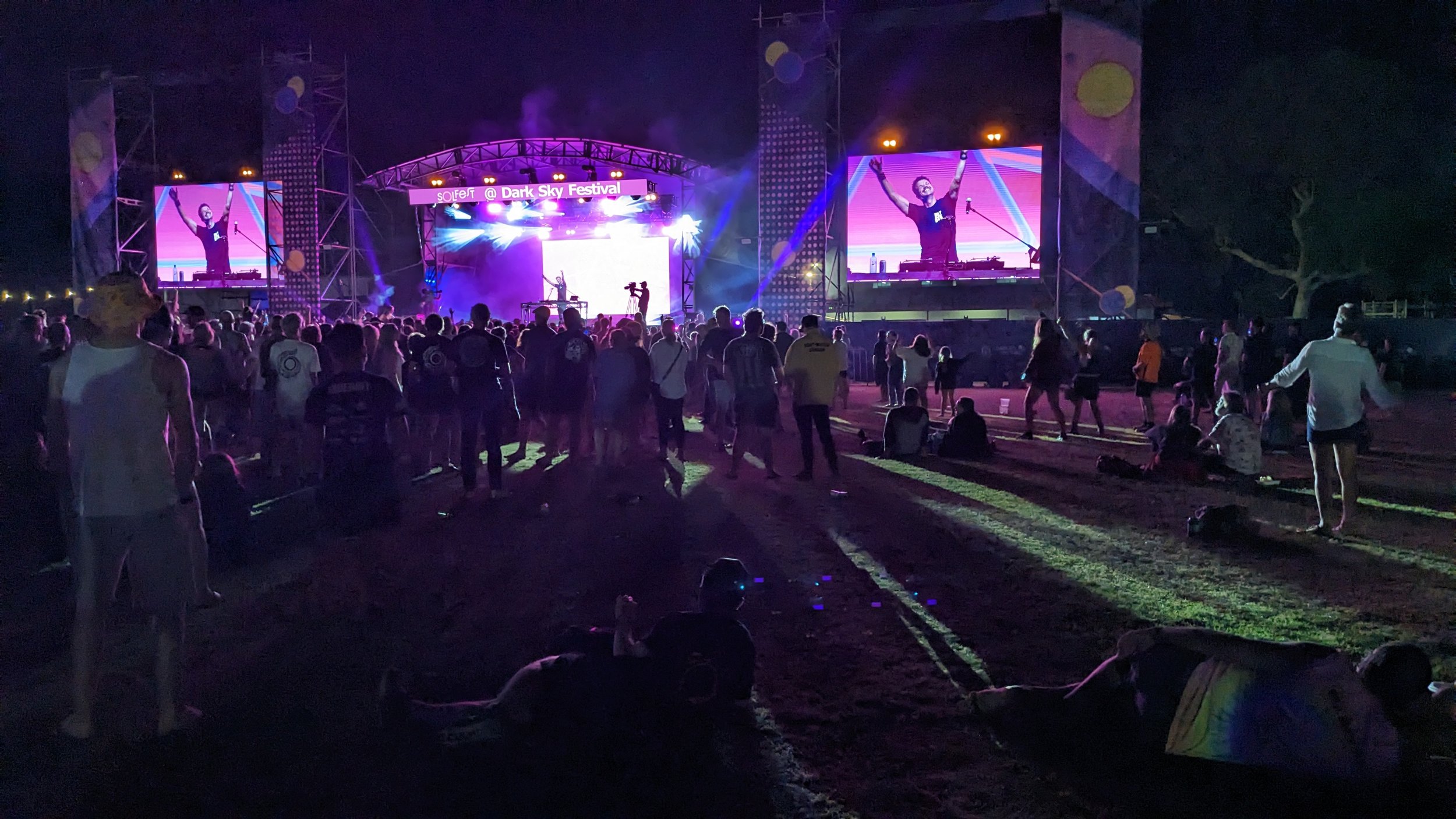The Path to Totality - EXMOUTH Hybrid Solar Eclipse 20th April 2023
Baily's beads as the Sun approaches totality.
My expedition began more than a year ago upon learning about an upcoming total solar eclipse in Exmouth, Western Australia. Intrigued, I immediately delved into extensive research, I thought I had left my run too late with only a few days to go, only to discover that the event was scheduled for April of the following year. I was relieved, however that relief quickly turned to dismay, every accommodation within a 500 km radius of Exmouth, including hotels, motels, and caravan parks, had already been fully booked. Nonetheless, my determination to witness the celestial phenomenon persisted. Through conversations with colleagues who had previously worked in Exmouth, I managed to secure a three-night parking spot on the driveway of an acquaintance's friend.
Previously, I had only witnessed a partial solar eclipse in California, which had captivated me. Observing a mere 20% of the sun being obscured by the moon through specialised eclipse glasses, I yearned for an opportunity to witness a total solar eclipse. Initially, I had planned to travel to the United States in April 2024 for that purpose. However, the impending eclipse in Exmouth provided a perfect trial run to test my photography equipment, including a new astrophotography tracker I had recently acquired.
A few weeks before the eclipse, I meticulously set up my camera, fashioning a homemade solar filter. To familiarise myself with the equipment, I directed my lens toward the sun, capturing trial photos. Astonishingly, the tracker proved to be highly efficient, as it flawlessly tracked the sun's movement after leaving my camera outdoors for approximately half an hour. Minor adjustments were all that was required.
And so, my journey to Exmouth commenced.
Melbourne to Perth Flight distnce 2700kms, Perth to Exmouth Driving distance 1250kms. (Image:GoogleMyMaps)
One week before the eclipse, I embarked on a flight to Perth, ready for a three-day journey to Exmouth in a hired campervan. This part of the country was uncharted territory for me, as my previous travels had only taken me as far as Monkey Mia. Nevertheless, I was struck by the sheer vastness of our nation, which became evident as I traversed the road north.
Upon reaching Carnarvon, three days prior to the eclipse, the excitement was building. Temporary signs along the roadside alerted travellers to a major event unfolding in Exmouth. Anticipation grew, fuelled by rumours of impending roadblocks. Authorities advised everyone to be adequately prepared, urging visitors to bring sufficient food and water to avoid overwhelming the local services. I vividly recall walking through the supermarket and the petrol station in Carnarvon, witnessing the stripped shelves that resembled those before an impending cyclone, despite a Category 5 cyclone having struck the coast between Port Hedland and Broome just a week earlier. Two days before the eclipse, the journey to Exmouth was complete, noticing the increase in traffic, and speed restrictions imposed long before reaching the destination. Surprisingly, the town itself appeared eerily quiet, resembling a ghost town two nights prior to the highly anticipated event.
The ocean waves crashing up amongst the rocks along the Cape Range National Park.
The day preceding the eclipse, I was fortunate enough to embark on a snorkelling excursion. It had been years since my last snorkelling experience at the Great Barrier Reef. Cape Range National Park provided an idyllic location, teeming with diverse marine life and vibrant coral. It was an exceptional adventure with memories that will remain with me for some time..
There were two things about this eclipse that made it quite special. This was a hybrid eclipse the rarest type of eclipse as described below. Secondly, the only location on the mainland of Australia to see totality was Exmouth! According to timeanddate.com I was one of approximately 0.0004% of the worlds population to actually witness the event!
“A hybrid eclipse is a type of solar eclipse that looks like an annular solar eclipse or a total solar eclipse, depending on the observer's location along the central eclipse path.
During a hybrid solar eclipse, the Earth's curvature brings some sections of the eclipse path into the Moon's umbra, the darkest part of its shadow that creates total solar eclipses, while other areas remain outside the umbra's reach, causing an annular eclipse.” - Timeanddate.com
As the morning of the eclipse unfolded, the sky remained clear and a vivid blue, accompanied by a reasonable breeze. These conditions were far from ideal for stabilising my camera, prompting me to set up in the front yard of the residence where I was staying. With two hours until totality, I meticulously prepared my camera for the event.
Ioptron SkyGuider Pro with Ipolar, Canon R5, Canon 2 x extender, Canon 100-400mm lens.
To align the tracker with the south celestial pole, a challenging task in the absence of stars during daylight hours, I employed my phone's compass. Utilising the compass, I positioned the tripod and tracker to face due south. By referencing Exmouth's latitude, I adjusted the elevation accordingly. Additionally, I used Google Sky Map to visually align my tripod with the approximate angle of the south celestial pole. Next, I affixed the camera fittings, including my DSLR camera, lenses, and the solar filter. With approximately 60 minutes remaining before the eclipse's commencement, I was ready.
During my research, I discovered a unique app called Eclipse Timer. This app allowed me to input my GPS location, providing precise calculations of the eclipse's contact times. As contact one began, the app notified us that the eclipse had commenced. Equipped with our solar eclipse glasses, we anxiously awaited the celestial spectacle, as time seemed to slow down to a snails pace. And then, it began. A minuscule indentation appeared at the sun's apex.
The moon starting to track in front of the sun. Sun spots clearly visible on the surface of the sun.
Over the course of the next hour, we stood in awe, witnessing the gradual coverage of the sun by the moon. The countdown had begun.
Adrenaline surged through our veins, especially when the final moments leading to totality arrived. As the app indicated the removal of camera solar filters, we removed our eclipse glasses. Beneath the total eclipse, we stood in complete awe, captivated by the extraordinary sight unfolding before our eyes. Although our location provided us with a mere 55 seconds of totality, just shy of the full 63 seconds within the eclipse's path, time seemed to fly by. Amidst capturing photographs with my camera, I made sure to immerse myself in the natural phenomenon, appreciating the eclipse's inherent beauty.
As the countdown commenced for the conclusion of the total eclipse, the app signaled the need to don camera filters. However, we were slightly slow in donning our eclipse glasses, resulting in a few split seconds of inadvertent exposure to the sun's rays. The intensity of even the faintest sunlight felt as though it had seared our retinas. Reacting instinctively, we swiftly turned away from the sun, shielding our eyes with the protective glasses. The atmosphere was electric, we were witnessing an amazing spectacular.
Totality shows the sun’s corona and prominence’s.
Following a few final photographs, I briefly took a moment to review my total eclipse images, astounded by the intricate details and the prominence’s of the sun captured within them. The satisfaction of obtaining such photographs was immeasurable.
Over the subsequent hour, the moon gradually receded, revealing more of the sun's brilliance. Throughout the entire event, I marveled at the temperature drop, the changes in wildlife behavior, and the captivating shadows cast during the partial eclipse phases. Though I was unable to witness any shadow bands, despite actively searching for them, I remain hopeful for the next opportunity. During the 55 seconds of totality, I regrettably neglected to scan the horizon in its entirety, missing the 360-degree sunset/sunrise effect.
As the eclipse drew to a close, I promptly uploaded and edited some of my best photographs. To celebrate this extraordinary experience, we congregated at the local oval that evening, where Australian bands and DJs entertained the crowd. The night was nothing short of remarkable, culminating with a performance by The Waifs, the headline act. And who would forget seeing a horse being ridden into a bar at Whalebone Brewing Company! (Only in Exmouth!).
The entire experience was utterly awe-inspiring, leaving me eagerly anticipating my next opportunity to witness another eclipse, scheduled for April 2024 in the United States.
The Eclipse Periodic Table
Since the eclipse, I have invested countless hours into meticulously editing my photographs, compiling sequences that encapsulate the entire event. Below, I am delighted to share some of my finest images, allowing you to relive the experience through my lens.
These prints are available for purchase exclusively on my website. Please note that they are offered as print-only options, although I am open to discussing framing possibilities upon request.
Contact for international postage, framing or alternative sizes including original sizes. Other print mediums also available - metal, acrylic.



